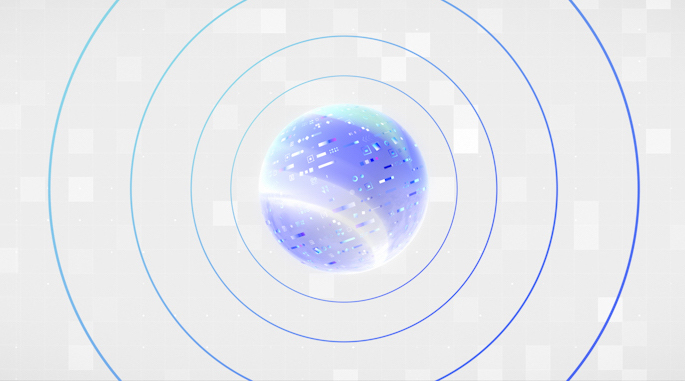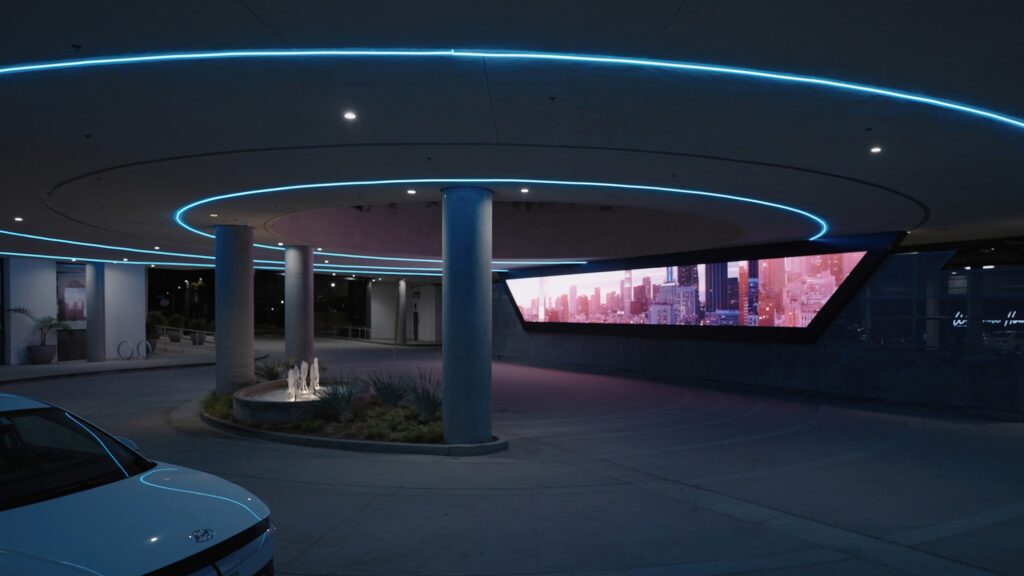Creating Purposeful Experiences: Tech-Forward Storytelling
An Interview with Mark Harris, Experience Designer/Strategist/Writer/Director
Mark Harris is a sought-after experience designer and strategist known for immersive storytelling that blends tech-driven content with dynamic physical spaces. Much like the experiences Mark helps to create, his background is a melding of technology and art—driven by interests both analog and digital.
URL or IRL, Mark has contributed to award-winning work representing the likes of Netflix, HBO, ACMI, MasterCard, and New York Life, to name a few. And he’s quick to point out his role as part of a team of people who work to make these projects successful.
In this interview, we sat down with Mark to talk about what it takes to create unique but purposeful story experiences, specifically within physical spaces.
—–
lc: Mark, to say your background is diverse might be an understatement, how did you end up focused on experiential strategy?
Mark: It’s a culmination of everything, really.
It’s kind of a broad term, experiential strategy, but my background is in theater and a lot of this feels like putting on a show.
I started as an actor, and I was an actor for about a decade then I moved into technology during the dot com boom. I stayed focused there for a good chunk of time but I was missing a creative aspect in my life. I wound up moving into an area they call Creative Technology and worked on a project at the Sundance Film Festival that was an immersive, interactive, alternate reality game. That really lead to a shift in focus toward more creative applications of technology. I joined an agency called Murmur with Mike Knowlton and we did several interactive documentaries, theatre pieces, advertising work. Later, I moved on to an agency called Campfire, known for groundbreaking ad campaigns. That’s where I worked on things like West World, Sense8, and The Man in the High Castle.
lc: At this point, your journey into physical spaces hadn’t really started yet?
Mark: Over the past decade, I began shifting out of pure technology toward a more holistic view of things. Because my background is also creative— writing, acting, making theatre—when I moved into permanent physical stuff, ACMI (formerly Australian Centre for the Moving Image), New York Life, I started to understand how I could contribute to projects in a more holistic manner. I became much more interested in the conceptual phase. But my technology background feeds and informs all of my concepting, I’m able to provide technology guardrails without bringing in an additional technology director.
lc: Technology has become a more, we’ll say organic, part of our everyday lives —more prevalent. Has that made your job easier or more complex?
Mark: In some ways, it’s made it harder, because technology moves so quickly. You have your iPhone and you can instantly make your face into the face of a monkey or an alien or something. With those kinds of lenses and filters in everybody’s hand, I think it becomes a little more challenging to impress people with the kinds of technologies we put into physical spaces.
I think it’s driven me away from leaning on technology because of such great technologies already being in people’s hands and it so becomes much more about the story and the experience, informed by technology.
lc: With these high-tech screens being in our pockets and screens everywhere really, how do you attract people when digital content is part of the equation, and how do you keep them engaged?
Mark: It really depends upon the nature and the purpose of the screen and the content. Some screens might be in a lobby and they’re just meant to pass by and you’re not really meant to walk up to them. In those cases, it’s interesting to think about digital art or generative art, but really just using it to add beauty to an environment and make people’s days better. If you are intending for people to walk up to something, again, this kind of goes back to principles of storytelling: a sense of mystery, curiosity, suspense; what will draw someone in and engage them in your story?
lc: So, as you’re thinking about a physical environment, how does the process start, so that at the end, the technology piece is something purposeful that accentuates or emphasizes the experience, and not just a gimmick?
Mark: It always comes back to the story and the experience you want to create. Sometimes you think about the emotions you want people to walk away with or the understanding you want them to take away. And those things tend to guide technology pretty accurately. If the technology gets too gimmicky, it can get in the way of the story.
An example would be like, using gestures to control content on a screen, waving your arm to move content around. That seems like an exciting idea, but depending on the emotional impact you want, it may actually be better just to have a screen activate when you walk up to it. It allows you to be a little more passive because even what seems like a simple gesture may get in the way. I always say people can either empathize or problem-solve. They cannot do both at the same time. Empathy requires a passive state, the state you find yourself in while watching a play or a move. Problem-solving is much more like the brain you engage in an escape room.
lc: How do you create a storytelling experience that has some longevity to it in a world where, to your point, everything does move so fast?
Mark: Yeah, that’s the challenge, especially on something like a museum or even a corporate environment, where you may not get another chance to change things for ten years. It really comes back to the things I just mentioned. You focus on the basics.
I worked on one exhibit that that uses physical blocks. When you put those blocks together, the exhibit edits a new film together in real time. So, one block may have a clip from a Quentin Tarantino movie, and another block may have a clip from Star Wars, and you put them into a tray and you slide them together. And now you’ve got a new movie. Playing with blocks is a very basic activity that almost anyone can get excited about; ten years ago, now, ten years in the future.
lc: You mentioned generative content earlier. What’s your perspective on how that seems to be growing in the digital space?
Mark:. I think a lot of people hear the word generative and they think some pretty specific thoughts about things that feel technology based. I’m really curious about exploring generative landscapes, cityscapes, the possibilities opened up by the growing prvelence of game engines like Unity and Unreal. And always influenced by real-time data. I love to think about generative work as an architectural component. I like to say “The building is alive.”



